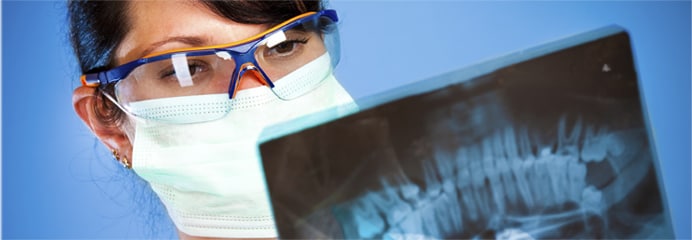Radiation Thermometer
The purpose of the radiation thermometer is to put common radiation doses in perspective. This tool can help people assess their own risk in a radiation emergency.
Radiation dose represents the amount of radiation absorbed by the body and is measured in millisieverts (mSv) [pronounced MIH-lee SEE-vert] or rem (1 rem equals 10 mSv). The millisievert unit of measurement is used internationally while the rem is used in the United States.
Below is an interactive tool with a slider and drop down menu. View the text version of this tool here.
To use the tool, move the slider with the cursor, use the + or − buttons, or select a value from the drop-down menu. The following information will be displayed as the slider moves:
- Radiation dose in mSv and rem
- Examples of common radiation sources at that dose
For more information on radiation dose, see https://www.cdc.gov/nceh/radiation/dose.html

Exposure Value
*This is a logarithmic scale, where each gray line represents a ten times increase or decrease in the dose, rather than a one unit increase or decrease.
[1] CDC. Acute radiation syndrome: A fact sheet for physicians [online]. 2013. Available from URL: https://www.cdc.gov/nceh/radiation/emergencies/arsphysicianfactsheet.htm
[2] National Research Council of the National Academies, Committee to Assess Health Risks from Exposure to Low Levels of Ionizing Radiation. Health risks from exposure to low levels of ionizing radiation: BEIR VII, Phase 2 [online]. 2006. Available from URL: http://www.nap.edu/openbook.php?record_id=11340&page=R1
[3] National Council on Radiation Protection and Measurements (NCRP). Ionizing radiation exposure of the population of the United States. NCRP 2009;160.
[4] U.S. Food and Drug Administration (FDA). Trends in mammography dose and image quality 1974-2009 [online]. 2014. Available from URL: https://www.fda.gov/radiation-emitting-products/mammography-quality-standards-act-and-program.
[5] Gibbs SJ. Effective dose equivalent and effective dose: Comparison for common projections in oral and maxillofacial radiology. Oral Surg Oral Med Oral Path Oral Radiol Endod 2000;90(4):538-545.
[6] Eisenbud M, Gesell T. Environmental radioactivity. 4th ed. Oxford (UK): Academic Press; 1997.
[7] Mettler F, Upton A. Medical effects of radiation. 2nd ed. Philadelphia: W.B. Saunders; 1995.
[8] U.S. Environmental Protection Agency (EPA). PAG manual: Protective action guides and planning guidance for radiological incidents (draft for interim use and public comment) [online]. 2013. Available from URL: http://www.epa.gov/sites/production/files/2015-06/documents/pag-manual-interim-public-comment-4-2-2013.pdf
[9] U.S. Department of Transportation (DOT), Federal Aviation Administration Advisory Circular. Radiation exposure of air carrier crewmembers – FAA AC 120-52 [online]. 1990. Available from URL: http://www.solarstorms.org/FAAAirlines.html